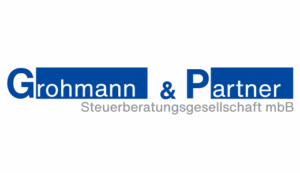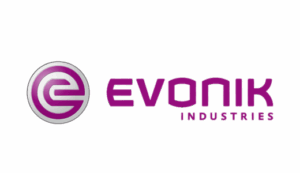
Generative AI & LLMs
Texts, chatbots, language models — automated with AI. Generative AI and Large Language Models (LLMs) enable the development of complex texts, dialogue-ready systems, and scalable interactions.
Generative AI & LLMs for automated content and smart dialogue systems
Instead of just searching for information, Generative AI generates new content — from precise FAQ answers and structured emails to well-founded decision templates. Large Language Models understand language in context, formulate texts and enable dialogue-capable systems such as chatbots that interact with users in a natural way.
Companies use Generative AI & LLMs to automate content, scale internal communication and provide smart assistance solutions — at CONVOTIS, we make productive use of this potential.
Technology for Generative AI & LLMs — context-sensitive, prompt-driven, API-ready
- Text, audio, and image generation, as well as summaries with large language models
- Natural Language Processing (NLP) for structured & unstructured content
- Retrieval Augmented Generation (RAG) for context-based knowledge access
- Internal process automation with AI agents and Generative AI-augmented RPA
- Integration with data sources like CRM, ERP, and corporate applications such as Microsoft Teams and API management tools
- LoRA fine-tuning and transfer learning for LLMs and Stable Diffusion models
- API-first provision as a microservice, container or low-code component
- Technology stacks: Python, LangChain, Hugging Face, LlamaIndex, MCP, RESTful APIs





























What are the specific benefits?
Smart content, dialogue-capable systems, productive processes.
How we support you.
With Generative AI & LLMs, we develop solutions that not only process language, but also make it usable based on context. We support you in selecting suitable models, defining prompts and integrating them into your existing data and system landscape, with a consistent focus on security, scalability, and user acceptance.
Instead of generic AI experiments, we focus on practical applications: from automated text systems and intelligent dialogue interfaces to domain-specific language models. Our implementation strategy takes into account regulatory requirements as well as technical infrastructure — for a fast, sustainable implementation of generative AI in your company.
We help you design and implement agentic AI architectures—composed of autonomous, goal-oriented agents that operate within your systems. From task orchestration to multi-agent collaboration, we define scalable patterns tailored to your business logic. Through hands-on workshops and guided explorations, we identify high-impact use cases across departments and build the foundations for next-gen AI-driven operations.
We design semantic data models and knowledge architectures that unlock the full potential of AI. Whether graph-based, ontology-driven or hybrid, our models enable reasoning, retrieval, and dynamic learning. We connect unstructured and structured sources into coherent knowledge layers, optimizing them for use with LLMs, RAG pipelines and intelligent agents. This ensures accurate, context-rich interactions grounded in your domain expertise.
With Retrieval Augmented Generation (RAG), we combine Generative AI & LLMs with internal knowledge sources for precise, context-supported results. We connect documents, guidelines and structured content via semantic indices, vector databases and metadata control. This creates a dynamic architecture that enriches generative answers with verified expertise — ideal for combining with our AI-powered knowledge management for end-to-end knowledge logic.
We modernize classic search systems by using Retrieval-Augmented Generation (RAG) architectures. Combining vector-based information retrieval with the generative power of LLMs, we deliver precise, context-aware answers instead of static result lists. Our solutions integrate seamlessly with your existing knowledge bases and document sources — whether structured or unstructured — enabling intelligent information retrieval, deeper insights, and conversational search experiences tailored to your domain.
We integrate Generative AI & LLMs into your existing system landscape in a customised way, from service portals and specialist applications to DMS and ERP platforms. Whether via API, container or low-code component, our solutions automate text processes, support dialogue systems and connect language models with internal data sources. Through semantic context linking, role control and governance compatibility, we create scalable AI services for productive scenarios.
We implement agentic AI architectures to automate complex business processes — beyond traditional RPA. Our autonomous agents can plan, decide, and act across systems, handling dynamic tasks with minimal human intervention. From document processing to multi-step workflows, we design modular agents that collaborate, learn, and adapt. The result: scalable automation that aligns with your operations, powered by reasoning and goal-driven execution.
We ensure that your AI solutions are robust, secure, and ready for production. Our quality validation frameworks cover everything from model evaluation and performance monitoring to compliance, safety, and human-in-the-loop review. Whether it's an LLM integration, agentic system, or RAG pipeline, we run stress-tested validation cycles and deploy with CI/CD best practices — turning AI prototypes into dependable, scalable services.
Your IT Transformation starts here.
Let’s talk about your goals.
Utilise the potential of your language with scalable generative AI. We support you in building intelligent text systems — with large language models, prompt engineering and platforms that provide relevant content exactly when it is needed.
Dive deeper into the topic.
Explore further resources.
Customer Story: World2Meet
We implemented a data-driven 360° platform for World2Meet — enabling context-aware dialogue systems and personalized content delivery.
Customer Story: Energy Sistem
For Energy Sistem, we implemented generative AI processes that generate personalised content in real time — user-centric, scalable and automated.
Data security in the age of AI
How to effectively protect your information in the age of AI — for trustworthy data analyses.
FAQ
Do you have questions about Generative AI & LLMs?
In our FAQ you will find concise answers to the most important topics relating to language models, text automation, prompt engineering and integration into existing processes.
Still have questions?
Generative AI & LLMs enable freely formulated answers to complex questions — in contrast to rule-based chatbots, which are limited to predefined dialogues. Language models such as GPT, LLaMA or Mistral generate context-related content in real time, adapt to the course of the conversation and can be expanded promptly. This makes it possible to create user-centric dialogue systems that are flexible, scalable and adaptive.
Generative AI & LLMs are integrated into your existing IT landscape via APIs, containers or low-code components. Whether ERP, DMS or service portal, we enable seamless integration in which language models react to internal data, roles or processes. Standardised interfaces, semantic indexing and context-based triggers are used for maximum flexibility and security.
Generative AI & LLMs can be used to automatically generate structured and unstructured content, from emails, explanatory texts and decision templates to product descriptions or internal documentation. Depending on the prompt, knowledge source and target system, precise, context-appropriate texts are created. There are numerous scenarios for productive text automation, particularly in service, HR, legal or IT.
Prompt engineering refers to the targeted control of Generative AI & LLMs using text-based instructions. The more precisely a prompt is structured — including roles, goals, tonality and format —, the better and more reliable the output of the language model will be. In practice, we develop prompt-based templates for internal use cases, train role prompts and optimize output through iterative testing.
RAG combines Generative AI & LLMs with internal company knowledge. Instead of relying solely on pre-trained models, documents, databases and content are linked contextually. Semantic vector searches, embeddings and metadata filters give the language model access to relevant information for reliable, fact-based answers. RAG is ideal for knowledge-intensive applications with high demands on accuracy and traceability.






